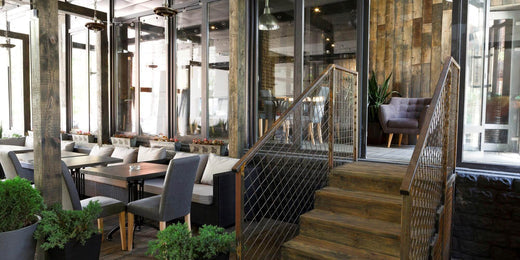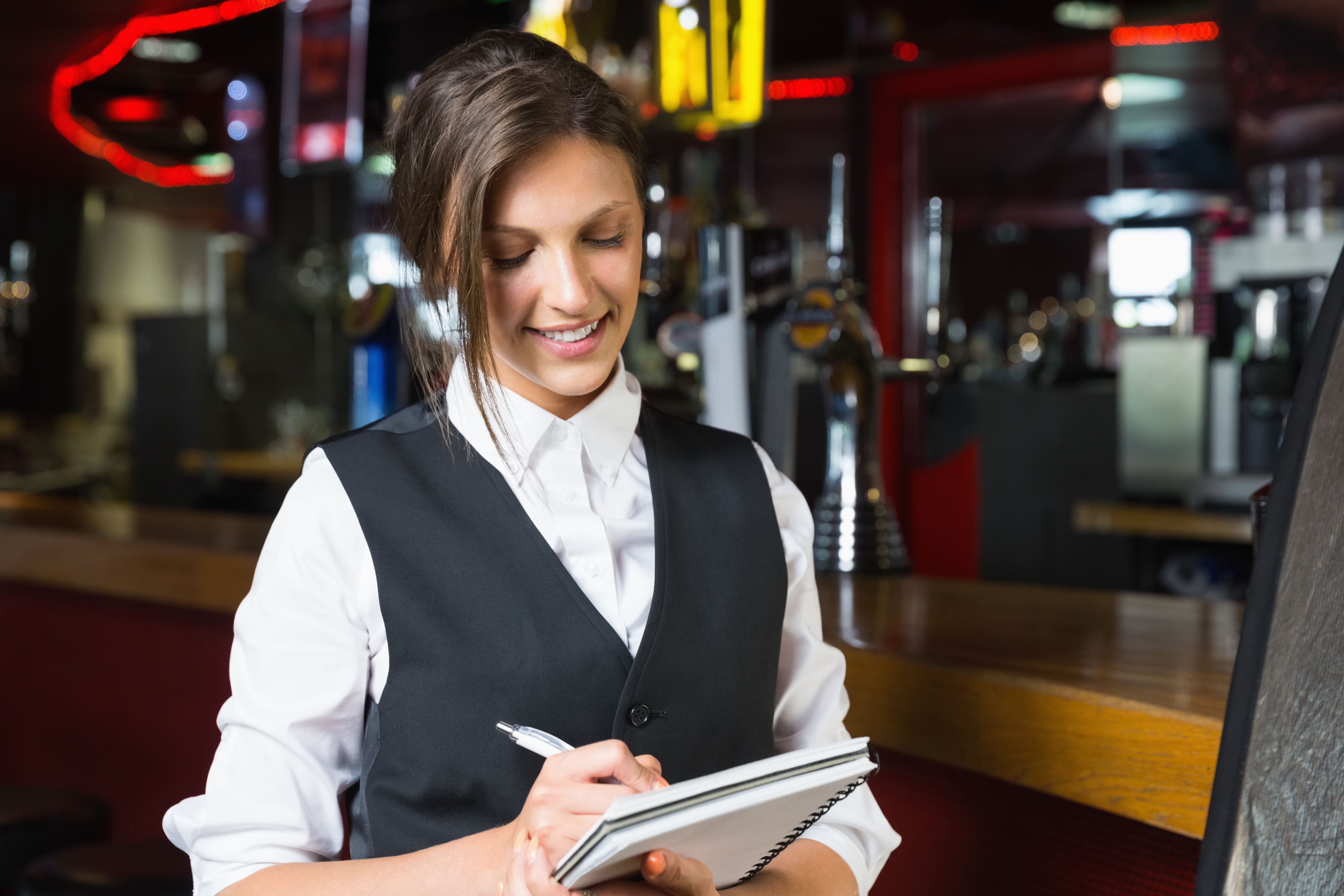
How Does Restaurant Interior Design Influence Customer Experience?
Great food won't save a restaurant with a terrible atmosphere. Walk into any successful establishment and you'll notice how every element works together - lighting that flatters faces, seating that encourages lingering, colors that stimulate appetite. These aren't accidents.
Restaurant failures pile up each year. Bad recipes get the blame, but honestly? Design disasters kill more businesses than burnt steaks ever could. Customers judge your entire operation within seconds of stepping inside. Mess this up and even world-class chefs can't rescue your investment.

Key Takeaways
-
Smart interior choices boost customer spending by 15-20% versus cookie-cutter setups
-
Strategic traffic flow prevents service meltdowns during dinner rushes
-
Seven core design styles target specific demographics and justify different price points
-
Personal branding elements forge emotional bonds that keep customers returning
-
Thoughtful material investments pay dividends through durability and reduced maintenance
How Does Restaurant Interior Design Impact Guest Experience?
Step into a buzzing restaurant on Saturday night. Feel that energy? Someone orchestrated every detail to create that vibe. Red walls get people talking and ordering appetizers. Blue might calm nerves but kills food cravings. Green whispers "fresh and healthy" to health-conscious diners.
Lighting controls everything customers see and share. Harsh overhead fluorescents make everyone look tired and food appear unappetizing. Warm LED strips create those perfect Instagram shots that customers post without thinking twice.
Furniture speaks before your servers say hello. Wobbly tables annoy customers trying to enjoy their meals. Uncomfortable chairs rush people through courses. Smart seating choices encourage relaxation and higher spending.
Restaurant design actually tricks our perception of time. McDonald's uses bright colors and hard surfaces to move people quickly. High-end steakhouses employ dim lighting and plush chairs to justify those premium prices through leisurely experiences.
Sound planning matters more than most owners realize. Hard surfaces bounce noise around until conversation becomes impossible. Strategic fabric panels, carpeting, and ceiling treatments tame decibel levels without sacrificing your aesthetic vision.
Temperature control affects spending directly. Chilly dining rooms make customers grab coats and leave faster. Overheated spaces create discomfort that ruins even perfectly prepared dishes. Smart zoning accommodates different preferences throughout your space.
How Can You Plan Your Restaurant Layout for Optimal Traffic Flow?
Terrible layouts murder profits faster than food poisoning scares. Servers shouldn't play dodge-ball carrying scalding plates. Customers hunting for bathrooms shouldn't stumble through kitchen prep areas. Every inch needs strategic thinking. Clear menu boards help guests navigate choices without flagging down busy servers.
Seating Strategy
Table spacing affects both capacity and comfort levels. Industry pros recommend 18-24 inches between chair backs for smooth passage. Wider aisles handle wheelchairs and feel more spacious without wasting valuable real estate.
Two-person tables maximize flexibility. Push them together for larger groups or keep them separate for intimate dining. Four-tops work best near windows where families can enjoy natural light and street views. A custom reserved table sign helps manage peak hour seating while adding professional touches.
Bar seating prints money compared to regular tables. Solo diners prefer counter spots where they can chat with bartenders or watch kitchen action. High-traffic locations benefit from bar layouts that serve waiting customers too.
Making Staff Movement Effortless
Service stations need positioning within 20-30 steps of any table. Stock these spots with essentials: clean glasses, silverware, napkins, condiments, and payment gear. Multiple stations prevent traffic jams when dinner rush hits.
Kitchen doorways require serious thought. Swinging doors with windows stop collisions between servers coming and going. Wide openings handle food carts and cleaning equipment without drama.
Storage access directly impacts service speed. Servers hunting for supplies in disorganized back areas waste precious minutes. Design storage with labeled shelving and proper lighting from day one.
Fire exits must stay visible and unblocked always. Local codes dictate minimum distances from seats to exits. Build these requirements into your planning instead of treating them as afterthoughts.

How Important is the Interior of a Restaurant?
Restaurant interior design determines pricing power more than most people understand. Upscale environments justify menu prices that would seem ridiculous in basic settings. Customers happily pay premium rates when surroundings match expectations.
First judgments happen in seven seconds flat. Your entrance, host stand, and immediate view communicate quality instantly. Shabby front areas suggest kitchen problems even when that's completely wrong.
Operational efficiency depends on smart space planning. Bad layouts drain profits through wasted staff movement and communication breakdowns. Good designs cut training time for new hires who can navigate intuitively.
KyivWorkshop specializes in custom restaurant accessories that reinforce professional positioning. Their handcrafted menu covers and check presenters signal attention to detail that customers associate with quality service.
Staff morale jumps dramatically in beautiful environments. Employees take pride working in gorgeous spaces, leading to better service and lower turnover. Happy teams become genuine advocates for your business.
Challenging locations transform through clever design tricks. Basement spots use mirrors and strategic lighting to feel expansive. Street-level places maximize windows for natural light and sidewalk appeal.
Loyal customers often cite atmosphere as their main reason for choosing one restaurant over dozens of competitors. Food quality alone rarely builds lasting relationships when similar options exist everywhere.
What are the Types of Interior Design?
Minimalism

Clean lines put food presentation center stage instead of competing with busy decorations. Neutral palettes create Instagram-worthy backdrops that customers love sharing. Simple furniture pulls double duty without creating visual chaos.
Natural materials like light wood, brushed steel, and white stone add warmth while maintaining sophisticated looks. Minimalist spaces demand excellent lighting since you can't hide poor illumination behind decorative distractions.
Art Deco

Bold geometric patterns and shiny metallic accents create glamorous vibes perfect for celebration dinners. Rich colors like emerald, sapphire, and gold establish premium positioning that supports higher menu prices.
Fancy lighting fixtures become conversation pieces that guests remember months later. Mirrored surfaces bounce light around while making spaces feel larger. This style kills it for cocktail lounges and special occasion spots.
Industrial

Exposed brick, steel beams, and concrete floors embrace authentic urban vibes that younger crowds love. Raw materials handle heavy traffic beautifully for breweries, pizza joints, and casual concepts.
Edison bulbs add vintage charm without expensive installation costs. Iron fixtures and reclaimed wood tell craftsmanship stories that connect with customers wanting real experiences over corporate polish.
Rustic

Natural wood grain, stone textures, and earth tone color schemes evoke comfort and tradition. This approach works beautifully for farm-to-table concepts where local sourcing stories enhance the authentic atmosphere. A custom wooden menu perfectly complements this aesthetic while reinforcing the handcrafted theme.
Handcrafted details like live-edge tables and wrought iron hardware support local artists while creating unique focal points. Seasonal touches keep spaces feeling fresh year-round without major renovation costs.
Contemporary

Current trends mix with timeless elements to create spaces that age gracefully. Flexible furniture handles different events from intimate dates to birthday celebrations without major rearrangement.
Technology blends seamlessly instead of dominating. Hidden charging ports, wireless sound, and discrete lighting controls add convenience without screaming "look at our gadgets."
Creating Memorable Experiences Through Design Details
Personal touches separate unforgettable restaurants from generic chain experiences. Local artwork tells neighborhood stories that build community connections lasting beyond single visits. Family photos or historical displays get strangers talking to each other.
Sign ideas boost wayfinding while strengthening brand recognition throughout your space. Welcome boards set positive expectations for exceptional service from the first moment guests arrive.
Branded glassware becomes subtle marketing appearing in countless social media posts. Unique coasters featuring your logo or local landmarks spark conversations while protecting surfaces.
Scent marketing influences appetite more powerfully than visual elements. Fresh bread aromas from open kitchens trigger hunger and homey feelings. Light vanilla or citrus scents promote relaxation without overwhelming food smells.
Music requires demographic research and volume monitoring during different shifts. Jazz fits upscale places while acoustic folk suits coffee shops. Electronic beats energize bar crowds but might annoy families wanting quiet dinners.
Seasonal decorations keep regulars interested in frequent returns. Halloween displays, holiday lights, or spring flowers provide photo opportunities while showing community spirit.
Material Selection and Furniture Choices
Balancing looks with durability challenges every owner's budget decisions. Natural wood brings character and warmth but needs regular upkeep and refinishing. Metal accents last forever while adding contemporary sophistication.
Seating comfort directly correlates with customer spending patterns. Ergonomic chairs encourage longer visits and additional course orders. Booth seating creates intimate conversation spaces that families and couples prefer for special occasions. Quality extends to every detail, including how you present the final bill with a personalized wooden check holder.
Flooring choices impact both appearance and daily operations significantly. Tile cleans easily but amplifies noise. Carpet absorbs sound but needs frequent professional cleaning. Many successful places combine materials to define different zones.
Performance fabrics maintain looks despite spills and heavy use. Restaurant-grade upholstery resists stains while offering attractive patterns and colors matching your overall scheme.
Lighting requires layered approaches combining ambient, task, and accent illumination. Dimmers allow mood adjustments from bright lunch service to romantic dinner settings using the same fixtures.
Service Integration and Final Touches
Outstanding service needs environmental design supporting staff efficiency during crazy busy periods. Wide pathways prevent server crashes while juggling multiple plates. Smart service station placement cuts response times and boosts satisfaction scores.
Staff uniforms should complement your design rather than clash with carefully chosen colors. Service tools become brand extensions reinforcing your positioning through consistent visual messaging.
Open kitchens create entertainment when done right. Customers enjoy watching food prep while cleanliness becomes a marketing advantage. However, ventilation and noise need professional engineering.
Bathroom quality reflects overall standards more than owners realize. Customers form lasting opinions based on cleanliness, lighting, and decorative attention in these private spaces.
Private dining rooms generate extra revenue for special events, business meetings, and romantic celebrations. Separate spaces command premium pricing while offering intimate settings away from main dining activity.
Wine displays can become attractive focal points showcasing beverage program depth. Temperature-controlled cases protect inventory while creating sophisticated atmospheres justifying higher wine markups.




Leave a comment
This site is protected by hCaptcha and the hCaptcha Privacy Policy and Terms of Service apply.